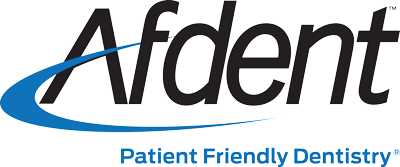Did you know that according to the American Association of Orthodontists, over 4 million Americans are undergoing some type of orthodontic treatment? And that about 25% of those are adults? With school letting out for the summer, many parents are taking advantage of a more flexible schedule to explore treatment options for their children. But orthodontics aren’t just for kids anymore, with the advancing technology of clear aligners more adults are choosing to address crooked teeth or an uncomfortable bite.
So what can orthodontics do for you? What are some of the signs that you or your child would benefit from orthodontics? Here are some common problems that are good indicators for needing braces:
Crossbite: Do the top teeth fit over the bottom teeth? If not, this is known as a crossbite.
Crowding: Your child doesn’t have to have all of his or her permanent teeth to tell if they are crowded. If the permanent teeth are coming in all jumbled up, it’s time to talk to a dentist.
Impacted teeth: When the teeth don’t come in when they are supposed to, often as a result of crowding. The tooth can become trapped in the bone or resorb the root of another permanent tooth that may be in the way.
Overjet (often referred to as overbite): How far the upper teeth protrude over the lower teeth; if this is excessive it can make it hard to chew properly.
Malocclusion: Teeth that don’t come together properly or don’t touch at all.
Straightening crowded teeth makes them easier to clean and prevents cavities or gum disease. Correcting a “bad bite” or malocclusion can help prevent abnormal wearing of the teeth and jaw joint problems in the future. Often, kids with certain types of issues can benefit from early treatment as young as 7 years old.
The most common early treatment is maxillary expansion, or widening of the upper jaw. Because kids at this age are still growing, the palate can be widened gently and easily. There is evidence that expansion of a constricted upper jaw can help with breathing problems related to sleep apnea and symptoms of ADHD. Palatal expansion can provide the room needed to line the permanent teeth up without having to extract any teeth and create a nice, broad smile.
Adults and teens may also seek treatment for these same reasons. The main two orthodontic appliances to help with your esthetic and health concerns are: the “fixed appliance” (aka braces) and the “clear aligners.” The “fixed appliance” consists of brackets affixed to the teeth with a special adhesive. A series of wires are placed and can be adjusted to level and align the teeth. Elastics, or “rubber bands,” are hooked in different combinations helping to coordinate the jaws and guide the teeth into the proper bite.
New materials allow today’s brackets to be smaller and lower profile than those of yesteryear. There are also clear or tooth colored porcelain brackets that can be a more esthetic option for someone who needs a fixed appliance. An advantage of the fixed appliance is that you don’t have to remember to take it in and out or worry about losing it.
The “clear aligners” (such as Invisalign® or Clear Correct®) are a series of trays made to be changed every week or two that gradually move the teeth. Elastics can also be used with clear aligners to help coordinate the jaws. Besides the esthetics, the advantage of a clear aligner is that it is removed to clean the teeth, which is a lot easier than trying to brush and floss around braces.
The main disadvantage is that you are responsible for wearing them as directed. The technology of the clear aligner has advanced and depending on the practitioner there are a broad range of cases in teens and adults that can be treated with clear aligners.
What about the ‘do it yourself’ stuff I see on the internet?
“DIY” is everywhere, but there is a reason “Pinterest fails” is a thing. Fabricating your own appliance is a bad idea — people have essentially pulled their own teeth trying to close spaces with rubber bands. There are multiple companies marketing clear aligners directly to the public. I give a lot of direction on each of my Invisalign® cases and I don’t see how you can cut out the input of an experienced practitioner.
Whether or not braces are on your radar, a healthy smile helps keep your body healthy and boosts your confidence. There is no substitute for great home oral hygiene habits and seeing your dentist regularly. Orthodontics can be a great tool to help you keep your smile big and bright.

